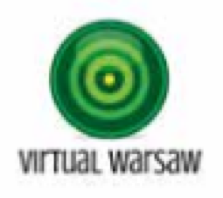
To ensure accessibility and inclusiveness for the visually impaired, the City of Warsaw launched “Virtual Warsaw”, a virtual smart city based on Internet of Things (IoT) technology that gives 'eyes' to those who have trouble seeing. The city is deploying a network of hundreds of thousands of beacon sensors equipped with next-generation Bluetooth to help visually impaired residents move independently about the city with assistance from their smartphones. To make it easier to move about the city, and to increase the accessibility of Warsaw and the quality of life and independence of its visually impaired residents, the city launched Virtual Warsaw. The programme consists of two major components. A micro-navigation system is a personal guide and assistant that allows any owner of a smartphone to receive written or verbal information on their surroundings, such as the location of bus stops, the number of arriving trains, the entrance to museums or where to queue in municipal offices. The second component is an individualised programme of activities and services specifically designed to help visually impaired people feel more independent in public spaces and the labour market. The micro-navigation system seeks to build a citywide infrastructure that supports and empowers the visually impaired to fully experience their city. It is powered by an open network of micro-transmitters that serve as a layer of physical beacons which create a virtual space accessible to smartphone applications. As well as working with users, leaders in Warsaw have found that building partnerships is critical to the success of Virtual Warsaw. They partnered with a small, local business to build the beacons, something which they felt was vital, as a larger company might not have been able to build such a customised product. City officials also partnered with NGOs such as the Polish Blind People Association, universities and other experts in the fields of visual impairment to better understand the challenges and needs of the target audience, as well as specialists in user experience (UX) design, accessibility and software development.
Tasks such as catching a bus to work or going to a museum with friends are often taken for granted by people with five fully functioning senses. However, the 40 000 Warsaw residents with visual impairment face additional challenges that limit their accessibility to important services, and by extension, limit their independence, employment and education opportunities, and overall wellbeing. About 85% of these sight-impaired residents report having a strong sense of dependency on others in order to live their lives, and over 80% are unemployed. This group also reports challenges in actively participating in activities such as shopping and spending free time with their friends. A major factor in these high rates is that it takes about 65-95 hours of work with an
individual trainer to learn how to move safely about the city, per place. The challenges for people with visual impairments are the same in every city. Like everyone else, the residents want to be independent in their daily activities, have a career they enjoy and friends enjoy the city with. Micro-navigation and support systems can be deployed in any city, and Virtual Warsaw can serve as a template for others to quickly introduce such services, and build on the successes and lessons learned in Warsaw.
The city faced challenges early on that stemmed from insufficient user perspective. The initial pilot version included features such as GPS-style turn-by-turn directions, which subsequent users found unnecessary and were later removed, resulting in loss of time and resources. This was a turning point, prompting Warsaw to shift to user-centred design. Now, as Virtual Warsaw expands, each step is carried out with visually impaired end users, who test the system and provide feedback to allow continuous improvement. In addition, the users generate ideas for locations and features to prioritise. As well as working with users, leaders in Warsaw have found that building partnerships is critical to the success of Virtual Warsaw. They partnered with a small, local business to build the beacons, which they say is key, as a larger company might not have been able to build such a customised product. City officials also partnered with NGOs such as the Polish Blind People Association, universities and other experts in the fields of visual impairment to better understand the challenges and needs of the target audience, as well as specialists in user experience (UX) design, accessibility and software development. The Polish Blind People Association, in particular, has been helpful in recruiting testers, with the city learning that people may be more willing to place trust in an NGO.
Although still in pilot mode, Virtual Warsaw is already starting to create opportunities for enhanced independence among the visually challenged population, and the potential is huge. This has the dual benefits of increasing the wellbeing of those using Virtual Warsaw, as well as improving the efficiency of government, as residents with improved independence require fewer city services. An indirect benefit is that the government has learned through this process that user-centred design can be highly successful, resulting in this model spreading to other government offices.


